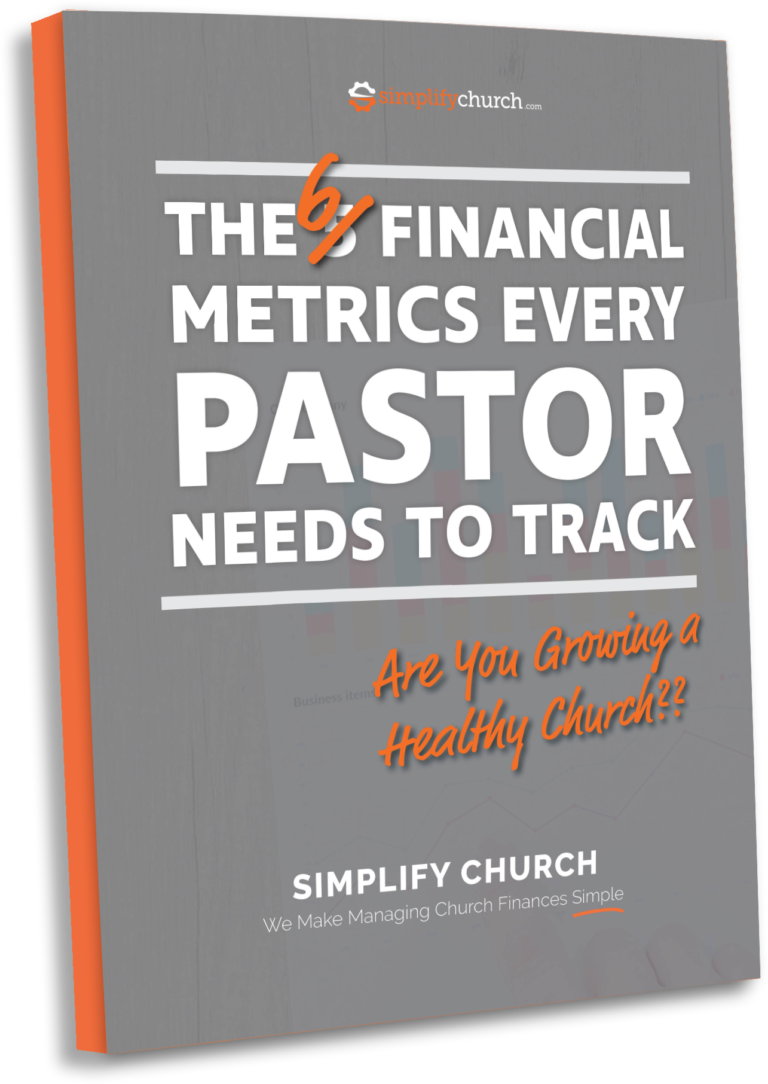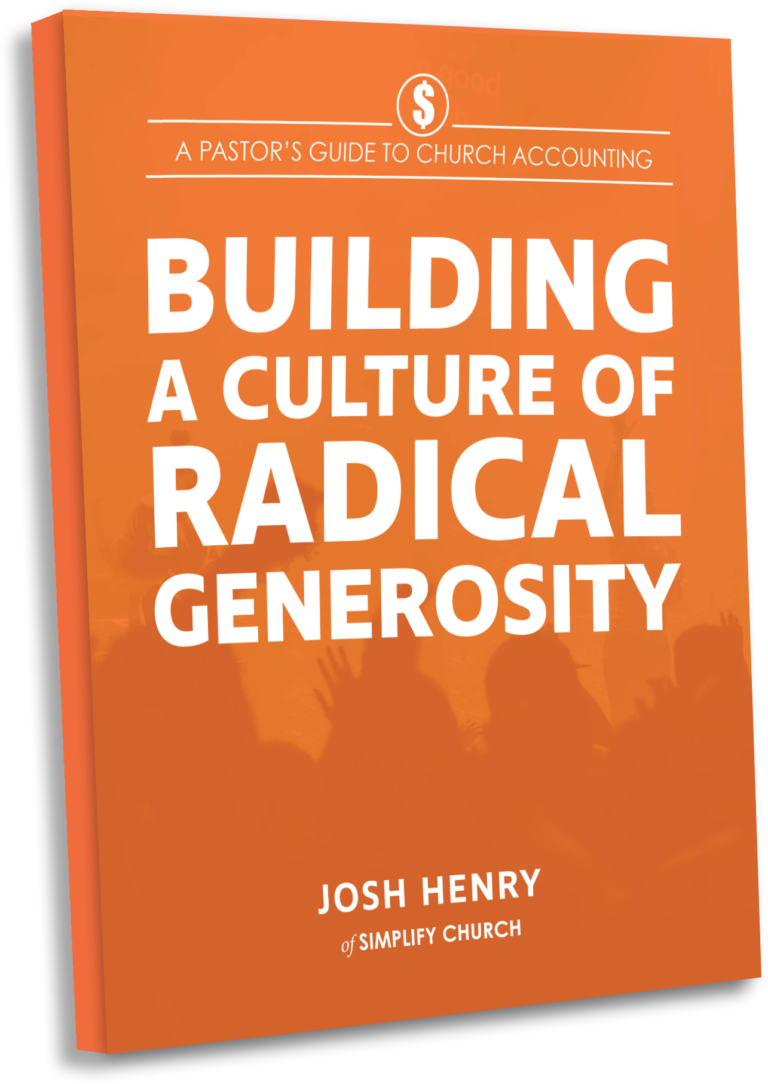I remember in my first pastoral position as I moved up the ranks in the church and first started reviewing the budget I was shocked when I received my first income report. I was shocked because it showed that less than 20% of our weekly attendance average had given anything in the monthly report.
Of course this had to be wrong so I ran back to the bookkeeper’s office and said there was something wrong with the report and something had to be missing or overlooked.
I’ll never forget the look on her face when she asked me to sit down in her office. (A bit of a backstory, the lady who was serving as the bookkeeper also used to work with the youth group when I was a rambunxious 17 year old so she held a motherly status for me)
She proceeded to tell me that the report wasn’t wrong and that was the reality of the church giving.
I was shocked.
I grew up in a Christian home where my dad from as soon as I received an allowance told me that tithing was part of church life. I’ll admit there probably could have been a more encouraging way to put that, but it worked for me.
Now, I’ll also admit that I can join the ranks of most church goers, I’d contend, that most struggle with this area of discipleship. The devil knows where he can grab a foot hold with me and tithing is definitely one of those areas where I can struggle.
So as pastors, how do we effectively share and encourage giving in churches. I’ve already written in a few areas where giving seems to be one of those taboo subjects most pastors want to scoot past quicker than messages on sex.
Here’s a quick idea on how to move people to take baby steps towards generosity.
I don’t remember who first introduced these steps so I cannot take credit for the originality, but they are also not earth shattering either. It’s a pretty simple idea and the stages are merely generalities and names I came up with.
The fact is the same, however, our goal as pastors should be to encourage people to move to the next step of giving. Here’s a quick explanation of each step.
Stage 1 – Tipper
This unfortunately is where a large number of people fall. If you’ve ever been the person walking up the aisles to pass the plate, these are the folks that grab a last minute amount of cash out of their wallet, fold it over 4 times and place it in the plate as incognito as possible.
There’s nothing inherently wrong with that except for the fact that it’s the epitome of poor theology and understanding of church.
For many of these people, their background or understanding of church giving puts it in the same boat as a charitable donation to a local community organization or the people that tie up traffic asking for money at the local four way stop in your home town.
Stage 2 – Giver
The next step shows a person moving up the chart when it comes to giving and discipleship. They now understand the purpose of giving back to God, but are not quite ready to fully commit. Generally speaking these will be younger Christians or people newer to church.
This will also be the people that have been around church a long time and still don’t quite fully understand or have never a true and accurate message about tithing. Further, they may have heard (possibly several times) and just haven’t quite brought themselves to the point where they are ready or trusting enough to jump in completely.
Their donation is consistent, but not a tithe (10% of income) that God has commanded. Perhaps it’s a budget issue, lack of funds, misplaced priorities or whatever, but either way, this group has the biggest potential to move to the next step.
Stage 3 – Tither
This group gets it. They are giving a true 10% tithe faithfully and consistently.
Now, before we continue pushing towards sainthood, let’s keep in mind that for many people, this act is still done begrudgingly. They give because they feel obligated. They’ve been shamed by previous churches, pastors or parents that you HAVE to give 10% back to God through the local church. While this group represents a big portion of your monthly income, keep in mind that many come to this step through legalism so there is still room for growth here.
Before we move on though, we must also mention that this group does contain some very faithful, sweet givers that faithfully are giving what they can, their tithe is given cheerfully and may represent a sacrifice on their part. Don’t let the few that tie themselves to legalism overshadow those faithful givers in this area that are truly experiencing the blessing of generosity.
Stage 4 – Generous Tither
The fourth group is the upper echelon of your tither group. These are the people that are going above and beyond their tithe to give. While this group will be small, it will also represent your most faithful church members, strongest supporters and most active participants.
Note: You will still have some here that are plagued by legalism, and these may also be some of the harshest critics in your church. Don’t let the few over-shadow the remainder that are a blessing to your ministry.
A Generous Tither understands that it’s all God’s to begin with and we are merely stewards of what He provides to us. They know that while God commands a tithe be brought to the storehouse, they are willing to go above and beyond to be generous to the ministry.
Their generosity in many ways will represent a sacrifice on their part in order to be generous, but they also experience the true blessing that comes with that sacrifice.
Stage 5 – Sacrificial Generosity
The final stage represents the smallest portion of givers. In fact, it is so small that you could possibly serve an entire ministry career without knowing one person that gets here.
Sacrificial Generosity completely flips the giving model upside down where the person no longer seeks God for how much to give, but rather, their question is asking how much they should keep.
These givers have come to a point of faithful dependence where they know that God will provide for all their needs and living out of complete faithfulness means that God will provide for them monetarily.
Here’s a challenge for you. Share these steps with your congregation and ask each person to self-identify what stage they are at.
Once they see where they know which stage they are at, challenge them to move to the next stage. Use this as part of your assimilation process as people become discipled through your ministry. As a pastor, encouraging people through faithful stewardship is part of the gig in discipleship.
What stages are you at yourself pastor?
Let me know your experiences with giving and these levels. Any words of encouragement you can share with other pastors that may be struggling with this topic in their church? Comment below.



